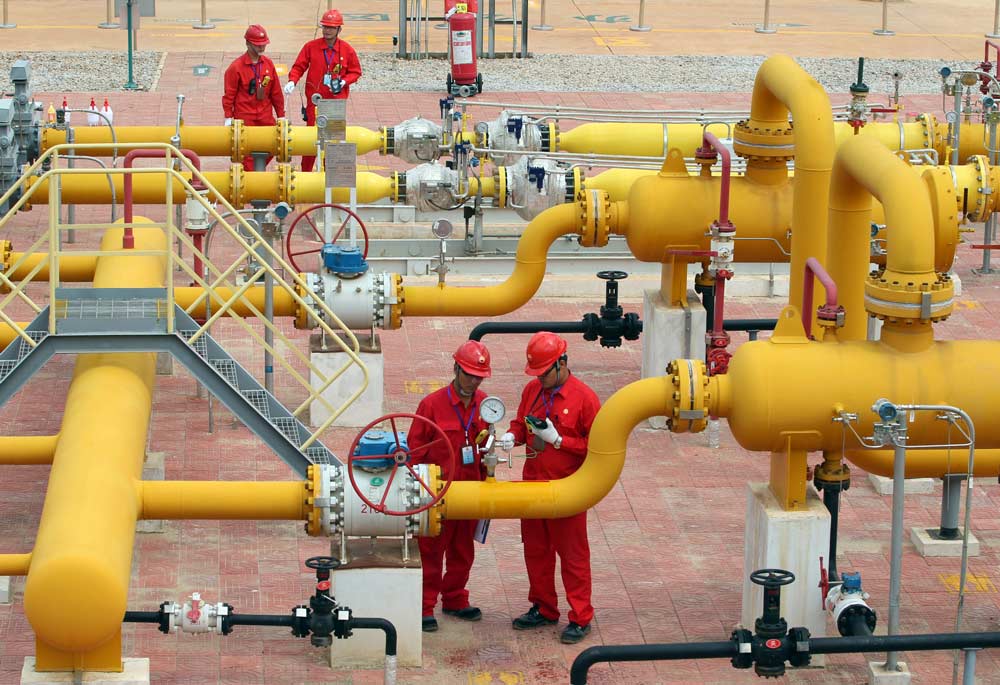Linear asset management takes center stage in this captivating narrative, inviting readers to delve into a realm where the intricacies of managing pipelines, railways, and power lines are unveiled with unparalleled clarity and depth. This comprehensive guide delves into the core principles, best practices, and innovative technologies that empower organizations to optimize their linear assets, ensuring their continued performance and reliability.
As we navigate through the complexities of linear asset management, we will explore the role of data management, condition assessment, and risk mitigation in safeguarding these critical assets. Case studies and industry examples will illuminate the practical applications of these concepts, showcasing how organizations have harnessed the power of linear asset management to achieve operational excellence and enhance safety.
1. Linear Asset Management Overview
Linear asset management is a specialized field focused on managing and maintaining linear infrastructure assets, such as pipelines, railways, and power lines. These assets are essential for various industries, including energy, transportation, and utilities, and require specialized strategies for effective management.
Linear assets are characterized by their extended length and often traverse diverse geographical areas, posing unique challenges in terms of inspection, maintenance, and risk management.
Types of Linear Assets
- Pipelines (oil, gas, water)
- Railways (tracks, bridges, tunnels)
- Power lines (transmission, distribution)
- Fiber optic cables
- Roads and highways
2. Key Principles and Best Practices

Effective linear asset management adheres to fundamental principles that guide decision-making and operations:
Principles
- Risk-based approach:Prioritizing maintenance and inspection based on asset criticality and potential risks.
- Data-driven decision-making:Utilizing data analysis to inform maintenance strategies, predict asset performance, and optimize resource allocation.
- Lifecycle management:Managing assets throughout their entire lifecycle, from design and construction to operation and decommissioning.
- Collaboration and communication:Fostering effective communication and collaboration among stakeholders, including operations, maintenance, and engineering teams.
Best Practices
- Comprehensive data collection:Gathering data from various sources, such as inspections, sensor monitoring, and maintenance records.
- Condition assessment:Regularly assessing asset condition to identify potential issues and prioritize maintenance needs.
- Predictive maintenance:Utilizing data analytics to predict asset failures and schedule maintenance accordingly.
- Compliance with industry standards:Adhering to relevant industry standards and regulations to ensure safety and reliability.
3. Technologies and Tools
Technology plays a crucial role in modern linear asset management, enabling more efficient and effective operations:
Software and Tools
- Asset management systems (AMS):Centralized platforms for managing asset data, tracking maintenance activities, and generating reports.
- Geographic information systems (GIS):Visualizing and analyzing asset locations, condition, and environmental factors.
- Condition monitoring systems:Sensors and devices that continuously monitor asset condition, providing real-time data.
- Predictive analytics tools:Software that analyzes data to predict asset failures and optimize maintenance schedules.
Benefits of Technology, Linear asset management
- Improved data collection and analysis
- Enhanced condition monitoring and predictive maintenance
- Optimized resource allocation and maintenance planning
- Increased safety and reliability of linear assets
4. Data Management and Analytics
Data management is essential for effective linear asset management, enabling informed decision-making and performance optimization:
Types of Data
- Inspection records
- Sensor data
- Maintenance history
- Environmental data
- Asset design and specifications
Data Analytics
Data analytics plays a critical role in linear asset management, providing insights into asset performance and enabling proactive decision-making:
- Predicting asset failures and optimizing maintenance schedules
- Identifying trends and patterns in asset condition
- Evaluating the effectiveness of maintenance strategies
- Improving asset reliability and reducing downtime
5. Risk Management and Mitigation
Linear assets are subject to various risks that can impact their performance and safety:
Types of Risks
- Environmental hazards (e.g., earthquakes, floods)
- Aging infrastructure
- Operational failures
- Third-party interference
- Cybersecurity threats
Risk Management Strategies
- Risk assessment:Identifying and evaluating potential risks to linear assets.
- Mitigation plans:Developing and implementing plans to reduce the likelihood and impact of risks.
- Emergency response protocols:Establishing procedures for responding to emergencies and minimizing their consequences.
- Regular inspections and monitoring:Proactively identifying potential issues and addressing them before they escalate.
6. Performance Measurement and Reporting
Measuring and reporting on asset performance is crucial for assessing the effectiveness of linear asset management practices:
Key Performance Indicators (KPIs)
- Asset uptime
- Maintenance costs
- Failure rate
- Safety incidents
- Environmental impact
Reporting
Regular reporting on asset performance is essential for communicating results to stakeholders and informing decision-making:
- Periodic reports
- Performance dashboards
- Benchmarking against industry standards
- Identification of areas for improvement
Summary
In the concluding chapter of our exploration, we will reflect on the transformative impact of linear asset management, highlighting its role in shaping the future of infrastructure management. By embracing the principles and practices Artikeld in this guide, organizations can unlock the full potential of their linear assets, ensuring their continued performance, reliability, and resilience in the face of evolving challenges.
Understanding linear asset management principles is essential for effective infrastructure management. By optimizing asset lifecycles, organizations can enhance efficiency and reduce costs. In today’s dynamic market, identifying the right stocks for investment is crucial. For insights on promising investment opportunities, refer to this comprehensive guide: what’s a good stock to invest in right now . This valuable resource provides valuable information to help you make informed investment decisions.
By leveraging these insights, you can strengthen your linear asset management strategies and achieve long-term financial success.
FAQ Insights: Linear Asset Management
What are the key benefits of linear asset management?
Linear asset management empowers organizations to optimize asset performance, reduce maintenance costs, enhance safety, and mitigate risks associated with their critical infrastructure.
How can technology enhance linear asset management?
Technology plays a pivotal role in modern linear asset management, providing tools for data collection, condition monitoring, predictive maintenance, and real-time decision-making.
What are the common challenges in linear asset management?
Linear asset management presents challenges such as managing vast and dispersed assets, dealing with aging infrastructure, and mitigating environmental risks.
